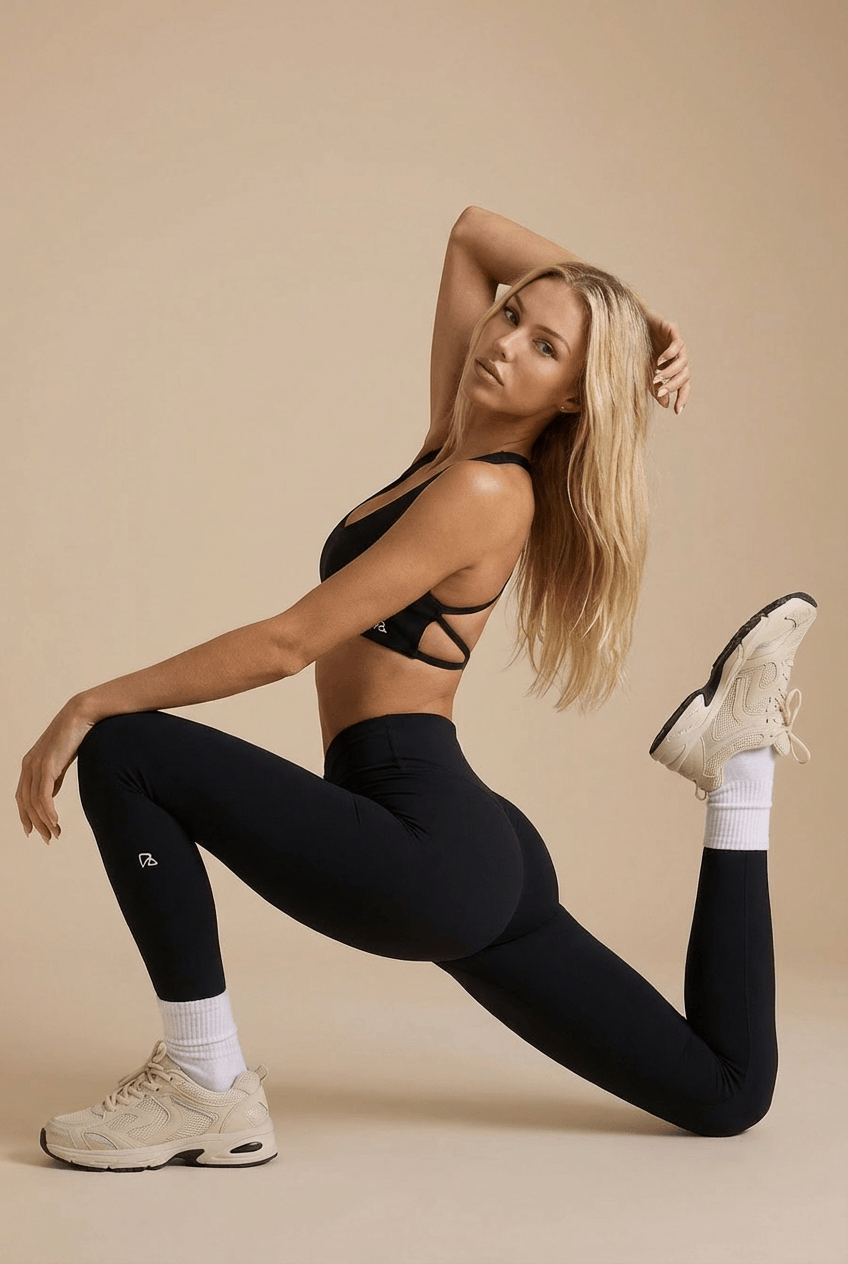Where Is Lululemon Made and Who Manufactures It?

Lululemon, the popular athleisure and sportswear brand, has manufacturers all over the world. While most of their products are made in Vietnam, that’s not the entire story.
The Canadian company has built its massive brand by leveraging various advantages, including worldwide manufacturing.
So, where are Lululemon products actually made?
Lululemon products are produced in several countries, including Vietnam, China, and Cambodia, among others. This global manufacturing strategy allows Lululemon to maintain high standards of quality and meet the growing demand for their stylish and functional clothing.
The 19 Countries Where Lululemon Is Made
As one of the top sportswear brands in the world, it’s not surprising that Lululemon relies on manufacturing facilities all over the planet.
According to the most recent data about their suppliers from Lululemon themselves, the company relies on 138 different facilities across 19 different countries.
Of these facilities, Lululemon defines 113 of them as “Top Tier”, which means they handle, “Final product manufacturing.”
Here’s how many of those Top Tier facilities are located in each country:
- Vietnam: 37 – 32.74%
- China: 18 – 15.93%
- Sri Lanka: 12 – 10.62%
- Cambodia: 10 – 8.85%
- Indonesia: 7 – 6.19%
- Taiwan: 5 – 4.42%
- Philippines: 4 – 3.54%
- USA: 4 – 3.54%
- Peru: 4 – 3.54%
- Bangladesh: 3 – 2.65%
- Thailand: 2 – 1.77%
- Turkey: 2 – 1.77%
- Columbia: 1 – 0.88%
- El Salvador: 1 – 0.88%
- Haiti: 1 – 0.88%
- Mexico: 1 – 0.88%
- Portugal: 1 – 0.88%
So, as we mentioned at the beginning, the majority of Lululemon products are manufactured in Vietnam with China in a distant second place.
That being said, it’s interesting to note that while Taiwan only makes up 4.42% of this list of manufacturers, this country is responsible for the popular Luon fabric that has been so instrumental to Lululemon’s success.
Taiwan is where Lululemon gets “Luon”, a type of fabric made from 86% nylon and 14% Lycra. This material has been so important to Lululemon’s success, that the company actually trademarked the fabric.
Luon doesn’t just help to wick moisture away during workouts. The preshrunk, stretchy nature of the material is why it was largely responsible for Lululemon’s conquering of the athleisure world more than a decade ago.
While the nylon is responsible for providing adequate coverage, it’s the Lycra that gives Lululemon leggings a reputation for never stretching out. So, while they may come with a hefty price tag, that’s partially because you won’t need to replace them anytime soon (if ever).
And that’s why many women call them the best leggings on the market.
As of March 2013, Lululemon’s list of manufacturers still includes Eclat Textile Co. in Taiwan, as a Tier 2 facility – the original supplier for Luon, so don’t expect this country to lose its prominent role in the supply chain any time soon.
Lululemon’s Supply Chain Earns Top Marks
Being a worldwide brand with a worldwide manufacturing process, Lululemon depends on a complex supply chain to facilitate the creation and sales of their leggings, hoodies, belt bags, and much more.
And yet, Lululemon has received surprisingly impressive ratings for the way in which it sources the materials it requires to create these products.
Back in 2018, KnowTheChain commended Lululemon for how far it had come in improving its supply chain practices in just two years. The brand came in 2nd of the 43 companies that were analyzed for this category, including a 100/100 score for its “Purchasing Practices.”
By 2021, Lululemonmovedinto the 1st position.
Lulelemon has also gone out of its way to make formal statements against “modern slavery and human trafficking” in supply chains – issues that have haunted worldwide manufacturing practices.
This dovetails with the company’s Impact Agenda, which follows three pillars: “Be Human, Be Well, and Be Planet.”
And according to Ethos, Lululemon is actively pursuing these goals. They gave the company an “A” for “Overall Impact”, which put them in the top spot when compared to “industry peers” like Nike, Under Armour, and 15 others.
So, while Lululemon continues to grow its manufacturing footprint and supply chains, it’s clear they’re doing so with ethics in mind.
Lululemon’s Supply Chain Conduct Policies and Practices
You can also review the company’s Responsible Supply Chain Disclosure from 2022 for yourself to see the step Lululemon has taken to pursue the goal of ethical sourcing and manufacturing.
Amongst other things, the document lays out the “policies that govern [their] approach to responsible business conduct”, which includes their policies on:
- Global Code of Business Conduct and Ethics
- Vendor Code of Ethics
- Vendor Code of Ethics Compliance Benchmarks
- Foreign Migrant Worker Standard
- Supplier Agreement
- Certificate of Acknowledgement and Approval
They also outline their “New Vendor Approval Process”, which outlines:
- Prescreening
- Supplier Self-Assessment
- Responsible and Supply Chain Assessment
- Reassessment
- Engagement and Onboarding
- Ongoing Monitoring and Assessment
In 2022, the company carried out 452 assessments.
And again, you can review the details of these practices and their results in more detail by clicking on that link above.
Looking forward, Lululemon has announced that they are dedicated to a more diverse supply chain in the future by increasing the number of vendors they use that are owned and operated by women, as well as other underrepresented groups.
Does Lululemon’s Manufacturing Processes Add to Their Products’ Prices?
No.
If anything, this type of outsourcing – especially to Southeast Asia – traditionally helps companies keep their prices low.
But as you may already know, Lululemon products tend to be expensive.
That link will take you to a page that goes into more detail about why Lululemon charges what they do, but the short answer is simple: they can!
As we covered earlier, Lululemon makes incredibly high-quality products that are perfect as day-to-day athleisurewear, loungewear, or workout gear. One look at their unique manufacturing process will go a long way toward explaining why their products have become so well known for both their comfort and durability.
But Lululemon has also done an amazing job of marketing its range of clothes. Their innovative “community-focused” marketing strategy entails everything from traditional content creation to brand ambassador programs to in-store events.
This approach is so powerful that Lululemon’s brand value actually GREW during the pandemic. And not by some small percentage. It increased by a whopping 40%!
So, Then Why Is Lululemon So Popular?
Lululemon's MASSIVE popularity stems from a combination of factors that have solidified its reputation in the athletic apparel market.
Despite the brand's higher price range, its popularity continues to soar due to the exceptional quality and fit of its garments. Lululemon's leggings, in particular, have garnered significant acclaim. The leggings embrace the body flawlessly, providing a flattering look without any discomfort. The premium materials used ensure their longevity, surpassing many competitors in terms of durability.
And, as we just covered, a big part of creating these high-quality products means sourcing the materials from dozens of different locations all across the globe.
Among Lululemon's renowned leggings are the Align high-rise pants, known for their exceptional softness and stretchability. These pants come in various patterns, sizes, and colors, catering to different preferences.
The Align high-rise crops have also become extremely popular among customers. For running enthusiasts, the Base Pace high-rise fleece running tights offer a water-resilient material, making them ideal for colder weather conditions.
As a whole, Lululemon’s unwavering brand reputation can be attributed to the sense of community it has fostered among its customers.
Lululemon has successfully tapped into the ongoing demand for activewear, especially during the pandemic when many people sought comfortable and versatile clothing options while working from home. Athleisure not only provides comfort but also a professional appearance, making it a win-win solution for both work and workouts.
Who Owns Lululemon?
So far, we’ve gone through all the details behind how Lululemon products are made – from who manufactures them to where this manufacturing happens.
But many people ask this question because they really want to know who actually owns Lululemon, so let’s dive into that question.
Technically, Lululemon isn’t owned by anyone. Lululemon Athletica Inc. is now a publicly-traded company
But originally, Lululemon was founded by Chip Wilson, who served as the original CEO. Wilson – who was born in California but raised in Calgary – had a background in the sports industry.
After other ventures, he founded Wilson in 1998 with the aim of creating high-quality and fashionable yoga clothing.
The company initially operated out of a design studio that transformed into a yoga studio at night to cover the rent. Wilson relied on feedback from yoga instructors who wore his products, contributing to the early success of the brand. Lululemon's first product was a pair of yoga pants made from nylon and Lycra that provided comfort and stretchability.
As Lululemon gained popularity, it expanded its product range and opened its first official store in Vancouver in 2000. Over the years, the company introduced innovative fabrics such as Luon, Luxtreme, Nulux, and Silverescent – something that was possible as Lululemon expanded its manufacturing process across dozens of different countries.
In 2007, Lululemon went public, with shares offered to the public, and raised significant capital. Wilson stepped down as CEO in 2008, and Christine Day assumed the position.
The Future of Lululemon’s Manufacturing Locations and Supply Chains
You don’t become a household name in a super-competitive industry without nailing every detail of your operation, from supply sourcing to product design to marketing to sales.
Lululemon has definitely done this.
And while they seem to have been especially masterful in their approach to worldwide manufacturing processes, it’s probably safe to assume that these practices will continue to evolve in the future. Lululemon is always looking for new opportunities to improve their products – and, of course, bottom line.
Hopefully, they will continue to do this with their ongoing commitment to humane, equitable practices.


